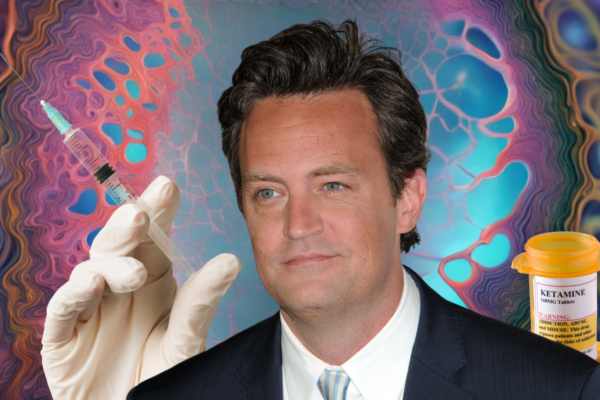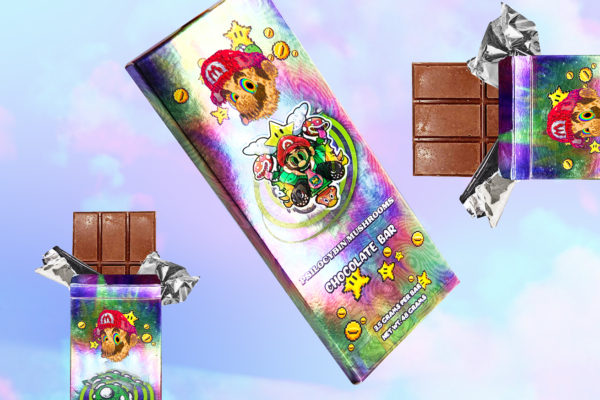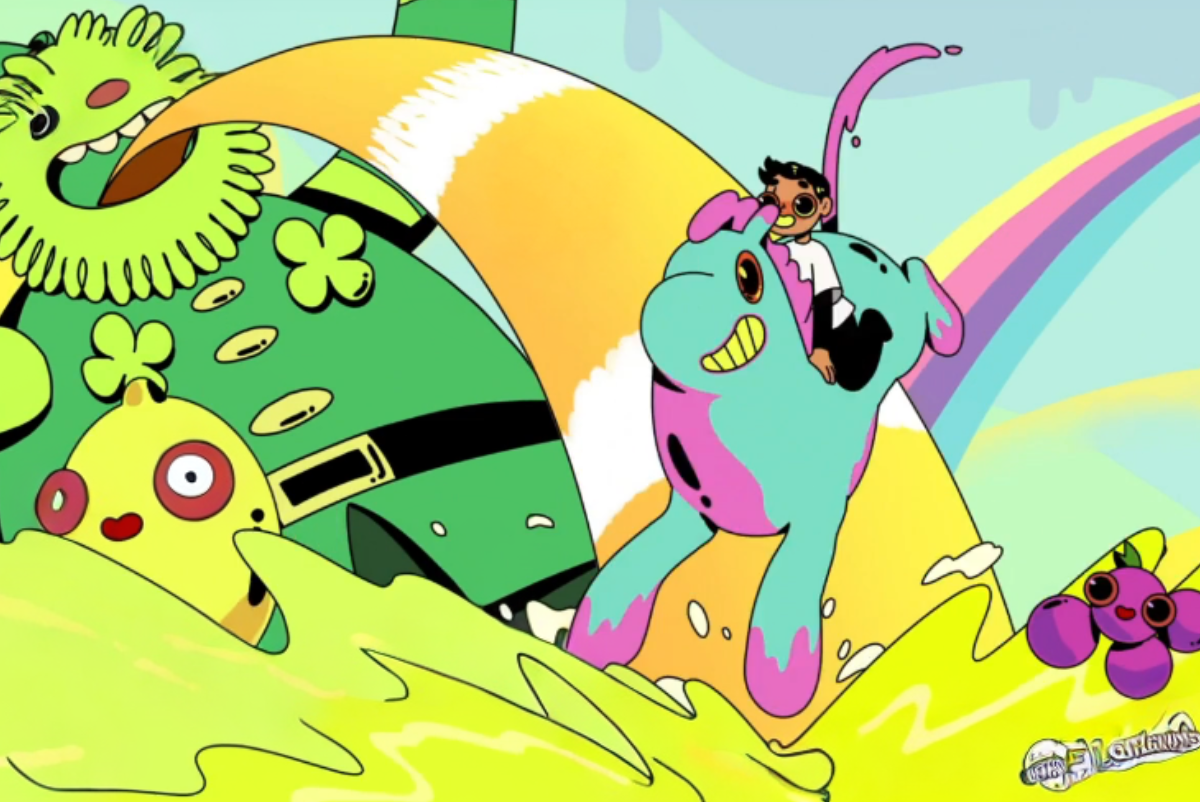
Lysergic acid diethylamide (LSD), commonly referred to as “acid,” is a potent psychedelic drug known for its mind-altering effects. Aside from psilocybin, acid is one of the most popular psychedelics out there. When consumed, acid induces a range of sensory, perceptual, and psychological experiences. One crucial aspect to understand is how long does an acid trip last and the duration of each stage of its effects, as it drastically differs from those of other psychedelics like psilocybin.
How Long Does an Acid Trip Last?
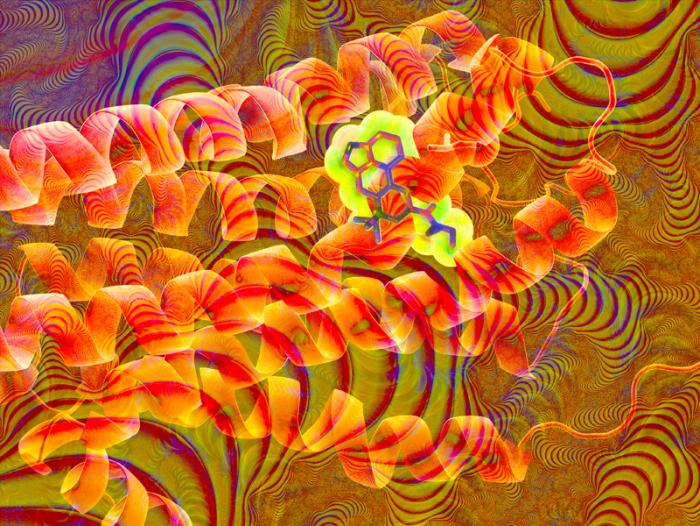
Upon ingestion, LSD is rapidly absorbed into the bloodstream and binds to serotonin receptors in the brain. The effects typically begin within 30 to 90 minutes after ingestion, although the onset time can vary based on factors such as dose, individual metabolism, and whether it was consumed on an empty or full stomach.
How long does an acid trip last? Well, the duration of an acid trip is a highly individualized experience. On average, the effects of LSD can last anywhere from 8 to 12 hours or even slightly longer. However, this timeframe is not fixed and can deviate depending on several factors, including the dose taken, the purity of the substance, the individual’s metabolism, and their unique psychological and physiological makeup. On average, expect to dedicate a full day to acid: a couple of hours preparing your space before hand, 12 hours tripping, and the residual effects post-comedown. But primarily, the length of a trip is influenced by molecular biology. Let’s discuss these mechanisms briefly.
Acid is a serotonergic psychedelic compound that primarily interacts with serotonin receptors in the brain. Among these receptors, the 5-HT2A receptor subtype plays a vital role in mediating the psychedelic effects of LSD. When LSD enters the bloodstream and reaches the brain, it binds to and activates the 5-HT2A receptors, triggering a cascade of neural events that lead to the characteristic psychedelic experience.
The duration of an acid trip is influenced by the occupancy and binding affinity of LSD to the 5-HT2A receptors. The term “occupancy” refers to the percentage of receptors that are engaged by the LSD molecule, while “binding affinity” describes the strength of the interaction between LSD and the receptor.
LSD has a high affinity for the 5-HT2A receptor. Once bound, LSD induces a conformational change in the receptor, leading to the activation of downstream signaling pathways. It is this conformational change that causes acid to last so long. Once acid binds to the receptor, think of like a “lid” getting put on the receptor that prevents acid from leaving, thus once it binds, it remains there. This leads to the downregulation of these receptors, which means there is a decrease in the number of available receptors that can bind to endogenous (native) ligands, such as serotonin. The effects of LSD are related to the time course of concentration in the plasma, according to a comprehensive review of the drug. Sometimes, this “lid” may be loose and allow some acid molecules to unbind as the high wears off, but for all receptors to be “uncapped”, then it can take 12 to 24 hours. While the perceivable effects of the drug stop around the 12 hour mark, the aftereffects, or “afterglow” can be felt well into the next day.
To summarize, as long as LSD is bound to 5-HT2A receptors and they continue to be downregulated, the effects of the drug will continue to persist. The trip ends once LSD unbinds from these receptors and brain cells eventually pull both these receptors and LSD into the cell, where they get degraded or recycled.
Metabolism and Clearance:
How long an acid trip lasts is also influenced by the metabolism and clearance rate of LSD from the body. After ingestion, LSD is rapidly absorbed into the bloodstream and distributed throughout various tissues, including the brain. The liver metabolizes LSD into inactive compounds, which are then eliminated from the body through urine.

The rate at which acid is metabolized and cleared can vary between individuals due to genetic and physiological factors. Some individuals may have more efficient metabolic pathways, leading to a shorter trip duration, while others may experience a prolonged duration due to slower metabolism. If a person metabolizes a drug quickly, they may only experience a 6-8 hour trip, while an average metabolism will put duration in the 8-12 hour range. More uncommonly, there may be people who metabolize LSD very slowly, which can cause their trips to extend way past the 12-hour mark.
Factors Affecting the Duration of an LSD Trip:
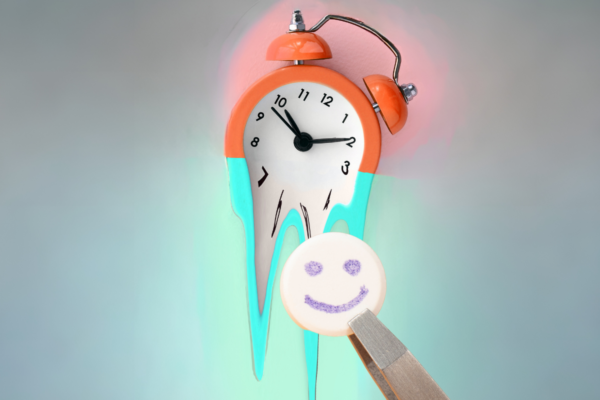
The duration of an LSD trip is highly variable, with the effects lasting anywhere from 8 to 12 hours on average. However, it’s essential to note that LSD’s effects can persist for longer periods in some cases, especially with higher doses or in individuals who are particularly sensitive to the drug. Some factors that can affect the duration of an acid trip are:
- Dosage: The strength of the LSD dose plays a significant role in determining the trip’s length. Higher doses are likely to produce more intense and prolonged effects, sometimes extending beyond the 12-hour mark. It is important to know the dose your LSD is and how it will affect you.
- Individual Sensitivity: Each person’s body chemistry and sensitivity to LSD can influence how long the effects last. Some individuals may experience a shorter or longer trip duration compared to others, even when taking the same dose.
- Tolerance: Repeated use of LSD within a short period leads to tachyphylaxis, which is the rapidly diminishing response to successive doses of a drug, thus reducing the drug’s overall effects. This can result in shorter trip durations as the body becomes accustomed to the substance. Make sure you wait around 7-14 days in between trips for tolerance levels to return to normal.
- Drug Purity and Potency: The quality and potency of LSD can vary, as it is often synthesized illicitly. The purity and strength of the LSD can impact the duration and intensity of the trip. Ensure that your LSD is legitimate, as there is the high probability that it is adulterated with substances like 25I-NBOMe. Always test your supply before consuming acid – testing kits are cheap and readily available online.
What are the Stages of an LSD Trip and What to Expect During Each One?
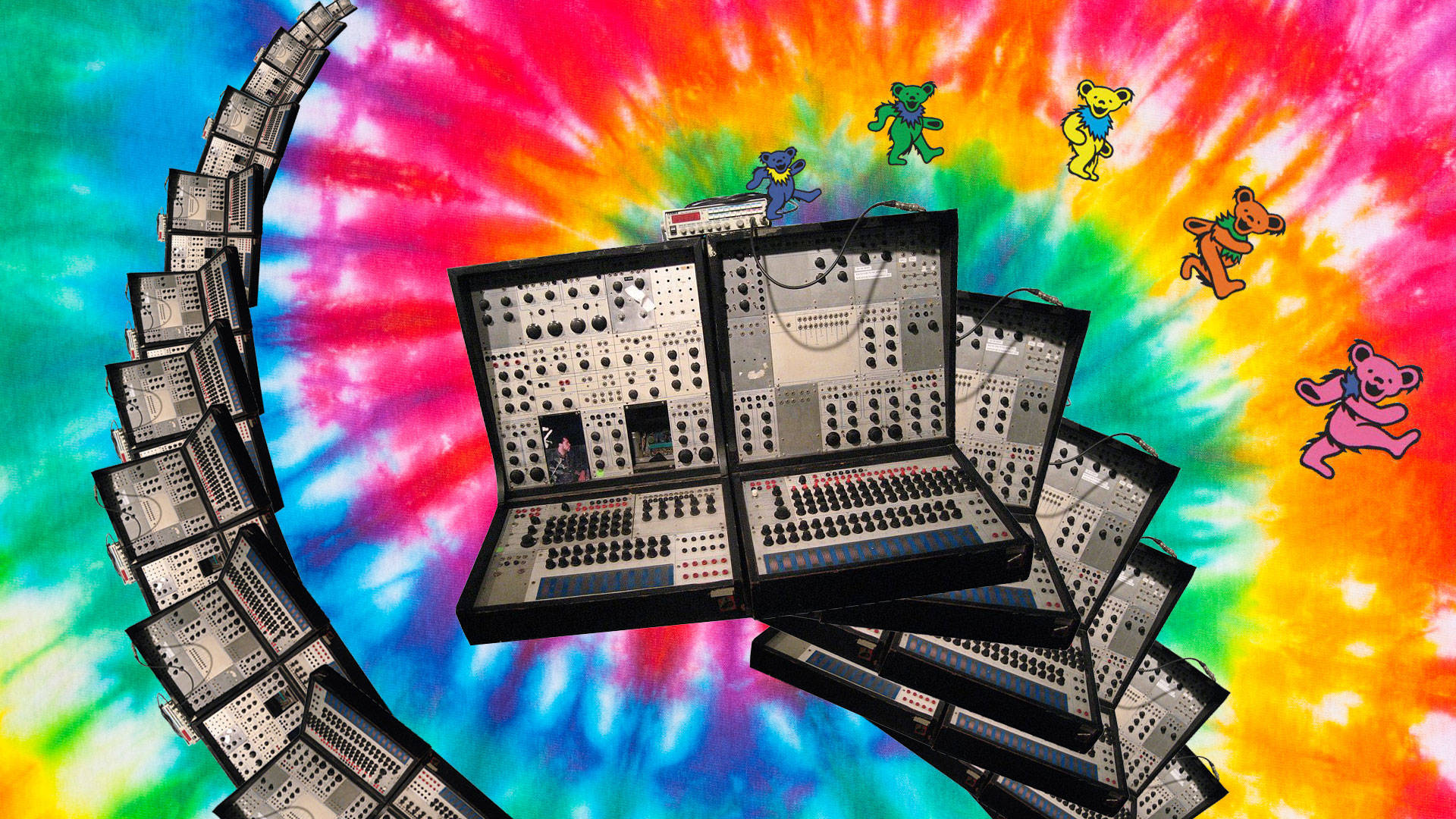
Similar to other psychedelics like shrooms, acid has a come up, a peak, a plateau, and a comedown. It is important to know what to expect in each stage in order to have a good, safe trip. Be aware that higher doses will change these stages, which we will discuss in detail where appropriate.
- The Come-Up (30-90 minutes): The come-up stage occurs shortly after taking LSD and involves the initial effects starting to manifest. Users may experience heightened sensory perception, mood alterations, and a sense of anticipation. A person will start feeling the come up around 30 minutes to an hour after dosing, even possibly up to 90 minutes after ingestion. The come-up can vary amongst individuals, but here are some things that a person might feel. Users may feel a slight sense of anxiety during this time, their body may feel either heavier or slightly looser, they may start yawning more, they may feel slightly disoriented, and/or they may experience heightened sensory perceptions. Higher doses and people who are more sensitive to acid or psychedelics can cause the come-up to be shorter, or the effects be felt under 30 minutes, so be aware of the amount of drug you are taking.
- The Peak (3-5 hours): The peak is the most intense phase of an LSD trip, characterized by profound visual distortions, intense emotions, and a loss of ego boundaries at higher doses. This stage typically lasts several hours and is marked by heightened introspection and altered states of consciousness. It is hard to explain what one is to expect during this part, as it can be very subjective. Talk to anyone about what they see on acid, and stories will vastly differ. Additionally, the intention of the trip can also greatly affect what will happen in this phase.At manageable doses, the peak will be where a person gets the most visuals or visual distortions. Walls may feel like they are breathing, colors will be brighter and more vibrant, faces will look distorted and their proportions will look altered, different textures such as hair, fur, blankets, etc. will feel different, and/or visual reality will feel “clearer” as if everything is hyper 3D. A typical effect on an acid peak will be the appearance of tracers, which is the experience of trails left behind by moving objects. For example, passing one’s hand in front of your face will leave a trail of varying hues, opacities, and colors.There is a certain point during an acid trip, based on my own personal experiences with the drug, that depending on the dose, the experience will shift from a visual experience to an introspective one where you are taken to a very specific psychedelic headspace. It is hard to describe this state, but in this headspace, you are on another state of existence. It is like being in between a state of reality and fiction, where you are able to understand you are on a drug, but there may be synchronicities or unexplainable phenomena that make you question whether reality is, well, real. Again, acid experiences can be highly subjective, so this may just be a thing I experience, but it is worth noting.Additionally, some people may experience a loss of reality where they are unable to discern what is fact or fiction. This can be common on higher doses. To prevent becoming paranoid or scared during a psychedelic-induced psychosis, it is important to know that this may happen. At higher doses, a person could experience the complete unraveling of reality and feel like they are dying. As scary as that may sound, if properly prepared, this can be a manageable, even enjoyable experience.It is worth repeating that the experience during the peak will be subjective based on a number of factors including the individual’s intention for the trip, the dose, their sensitivity to the drug, and their set and setting. Lastly, smoking weed during the peak of an acid trip can be used to extend the duration of it, thus it is not recommended for beginners to combine weed, if they are not prepared for that.
- The Comedown (3-5 hours): After the peak, the effects of LSD gradually begin to subside, leading to a more manageable and reflective state. The effects of the drug will still be felt, but they will not be as intense. Visuals will begin subsiding and you will leave any mental headspace you were in and return to a more manageable, sober state. This period can last a couple of hours. For certain people, smoking weed during this part can cause the trip to regress to the peak or can cause the peak and comedown to come in waves. If you feel like a slight sense of agitation and anticipation building during the comedown and things start feeling “different,” then just take a deep breath and let the trip take you wherever it wants to take you.
- The “Afterglow”: The afterglow, or after effects, is the last stage of an acid trip and can last several hours after the 12-hour mark or even extend into the following day. The “afterglow” stage of an acid trip refers to the period following the peak experience when the effects of LSD begin to fully subside and are entering the last leg of the trip. It is characterized by residual sensations and altered perceptions, albeit with reduced intensity compared to the peak. During this stage, individuals may experience a sense of calm, introspection, and enhanced appreciation for their surroundings. The afterglow can be a time of reflection and integration, allowing users to process the insights and emotions that arose during the trip. A day after a trip, it is common to feel a lingering sense of positivity and heightened creativity, although some individuals may also experience mental and physical fatigue, depending how the trip went. Overall, the afterglow stage provides an opportunity for gentle reentry into everyday life and can leave lasting positive effects on one’s well-being and perspective.
Tips for Navigating an LSD Trip
Navigating an LSD trip can be a transformative and introspective experience when approached with care and preparation. Here are some essential tips to help ensure a positive journey:
- Set and Setting: Create a comfortable and safe environment before consuming LSD. Opt for a peaceful location with trusted companions to minimize the risk of anxiety or discomfort during the trip. Ensure that, if you’re tripping at home, your space is tidy and organized, as clutter can spur up anxiety and discomfort during a trip. If you are outside or in nature, ensure that you are with someone you trust who can help you return someplace safe in the event that the trip takes a turn for the worse.
- Dose Responsibly: Start with a low to moderate dose if you’re new to LSD, allowing yourself to acclimate to the effects. Avoid excessive doses, especially if you have prior obligations or time constraints. It is better to build up to a larger dose, that way you can know what to expect with each rise in dose and be able to manage the situation better.
- Supportive Company: Tripping with close friends or experienced individuals who can provide reassurance and guidance can contribute to a more positive experience. If tripping alone, it is best to do it after having experience with the drug. Do not trip alone in public or in nature, as this can be dangerous if the trip gets overwhelming or hits harder than expected.
- Allow for Integration: After the trip, give yourself time to reflect and integrate the experience. Journaling, talking with trusted friends, or seeking professional help, if necessary, can aid in processing the insights gained from the trip. Personally, I keep a journal specific to acid trips where I write what I saw and what I remember. From there, I can revisit it throughout the coming days or weeks to begin extrapolating what lessons would apply to my life and why certain things surfaced during the trip, then I talk about these findings with my therapist to get a deeper insight into my psyche and process emotions and memories. Integration is an integral part of any psychedelic experience, and skipping it is going to prevent you from gaining the full effects of the drug.
- Stay Hydrated: An acid trip is quite the time commitment, and it can be easy to forget to stay properly hydrated during it. Keep a water bottle near you at all times so you can stay hydrated. Dehydration can exacerbate discomfort and anxiety, so ensure proper hydration.
- Embrace Openness and Surrender: LSD can lead to profound introspection and a shift in perspective. Embrace the experience with an open mind, allowing the drug to guide you through its effects. Surrender to the journey and let go of control, allowing yourself to fully explore the realms of consciousness. Do not try to control the direction of your trip. Refusing to relinquish control can make a trip turn bad or riddle it with anxiety.
- Ground Yourself When Needed: If a trip is starting to feel too overwhelming, taking deep breaths, hydrating, touching certain textures, or talking it out with a friend can help ground you. Sometimes, the experience can feel overwhelming and you may forget what you were saying, what just happened, etc., which can become disorientating. Simply having someone to remind you and keep you on track can help you feel calm. If you are alone, writing a note to yourself prior to the trip that states you are on a drug, on what day, what time you took it, etc. can help ground you and prevent you from spiraling. Even certain textures such as a blanket, a toy, or even petting a pet can bring you back to reality.
Final Thoughts
In all, the duration of an LSD trip varies depending on several factors, including dosage, individual sensitivity, tolerance, and drug purity. While most LSD experiences last between 8 to 12 hours, it’s essential to be prepared for the possibility of longer trips, especially with higher doses. Understanding the stages of an LSD trip and implementing responsible practices can contribute to a safe and meaningful psychedelic experience. Remember to prioritize set and setting, dose responsibly, and seek support when needed to ensure a positive journey into the depths of your consciousness.



